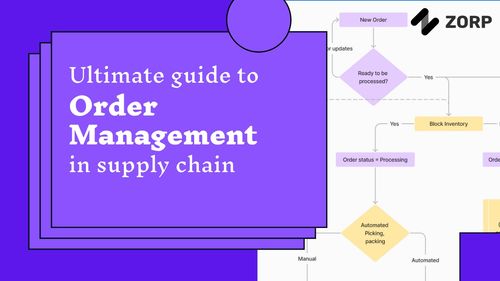The world of transportation is constantly evolving, and the latest innovation comes in the form of Mobility as a Service (MaaS). This cutting-edge technology aims to revolutionize the way people move around, offering more convenient and sustainable options. In this article, we will discuss MaaS, its benefits, the technologies driving it, some key providers, challenges, and its impact on public transportation. Finally, we'll see how ZORP can help businesses leverage MaaS to improve their operations.
MaaS refers to an integrated platform that combines various transportation modes, such as public transit, ride-hailing, car sharing, and bike sharing, into a single, seamless user experience. Users can plan, book, and pay for their trips using a smartphone app, which simplifies their travel experience and encourages the use of more sustainable transportation options.
The idea behind MaaS is to offer users a more convenient, cost-effective, and environmentally friendly alternative to private vehicle ownership. By providing a comprehensive range of transportation options, MaaS aims to make it easier for people to choose the most suitable mode of transport for their needs and preferences, ultimately reducing congestion and emissions.
MaaS offers a seamless, user-friendly experience by integrating various transportation services into a single app. This allows users to plan, book, and pay for their trips easily, without the need to use multiple platforms.
MaaS has the potential to reduce transportation costs for both users and providers. Users can save money by opting for more affordable transportation modes, while providers can benefit from increased efficiency and reduced overhead costs.
By promoting the use of public transportation and shared mobility services, MaaS can help reduce congestion and emissions, leading to a more sustainable urban environment.
Artificial Intelligence (AI) and Machine Learning play a crucial role in optimizing MaaS platforms. They help in analyzing user preferences and travel patterns, enabling the platform to provide personalized recommendations and route planning.
Big Data is essential for understanding user behavior and transportation trends. MaaS platforms rely on data from various sources, such as GPS tracking and user feedback, to optimize their services and ensure a smooth user experience.
The Internet of Things (IoT) enables real-time communication between devices, which is crucial for coordinating transportation services and providing accurate, up-to-date information to users.
As a leading ride-hailing platform, Uber has expanded its services to include other transportation options, such as bike and scooter sharing, making it a key player in the MaaS ecosystem.
Similar to Uber, Lyft also offers a range of transportation options beyond ride-hailing, including bikes, scooters, and integration with public transit services, positioning itself as a comprehensive MaaS provider.
Whim is a pioneering MaaS platform that integrates public transportation, ride-hailing, car sharing, and bike sharing services into a single app. Users can plan, book, and pay for their trips with ease, making it an excellent example of MaaS in action.
One of the main challenges in MaaS adoption is the need for extensive infrastructure upgrades, such as improved public transportation systems, to support a seamless user experience.
MaaS platforms collect and process large amounts of user data, raising concerns about data privacy and security. Ensuring robust data protection measures is essential for building trust among users.
As a relatively new concept, MaaS faces regulatory challenges, with governments and transportation authorities needing to adapt existing frameworks to accommodate this innovative approach to mobility.
MaaS relies on close collaboration between public and private transportation providers, requiring seamless integration of existing systems and infrastructure.
By making public transportation more accessible and user-friendly, MaaS can help attract new users and increase ridership, benefiting both users and providers.
The introduction of autonomous vehicles will further revolutionize MaaS, enabling more efficient and flexible transportation services.
As high-speed transportation systems like Hyperloop become a reality, they have the potential to reshape the MaaS landscape, offering new and innovative mobility solutions.
Drone technology could also play a role in the future of MaaS, providing aerial transportation options for both goods and passengers.
ZORP, a technology platform that helps businesses create applications for managing and gathering insights about field and factory teams, can play a significant role in the MaaS ecosystem. By leveraging ZORP's platform, businesses can develop custom solutions to optimize their transportation and logistics operations, taking advantage of the benefits that MaaS has to offer.
Cutting-edge MaaS technology is transforming the way we think about transportation, offering more convenient, cost-effective, and sustainable options for users. As MaaS continues to evolve, driven by advancements in AI, Big Data, and IoT, the future of transportation looks increasingly interconnected and innovative. Businesses looking to harness the power of MaaS can turn to ZORP's platform to develop customized solutions that meet their unique needs and requirements.
Uncover the transformative power of APIs in revolutionizing MaaS integrations. Explore more in our blog: How APIs are Revolutionizing MaaS Integrations.

Ready to explore how Mobility as a Service can revolutionize your business? ZORP's technology platform can help you develop tailored solutions that harness the power of MaaS to optimize your transportation and logistics operations. Don't miss out on the future of transportation – get started with ZORP today!


